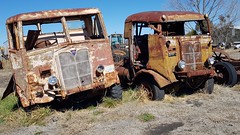
- Click Here For More Specific Information On:
- Forklift Hire Melbourne
By Stewart Wrighter
A well-known company offers a variety of modal exciters and performs modal excitation. It is an international company with headquarters based in Cincinnati, Ohio. This company has sales and services locations all around the world such as China, India, Japan, and Korea.
The products manufactured at Xcite Systems Corporation have origins at the University of Cincinnati, Mechanical Engineering Department. This company was founded in 1997 by two former Zonic Corporation executives and provides top quality structural excitation products and services to clients in the automotive, aerospace, shipbuilding, power generation, turbo machinery, and power generation businesses. The very first modal product developed and marketed by Xcite Systems Corporation was the Xcite1300T Systems to meet the needs of the dynamic of automotive drive train and rotating electrical machinery engineers. The Xcite110, Xcite1200, and Xcitre1300 linear exciters were later developed.
Xcite Systems Corporation brought to the market the first commercial linear inertial mass exciter known as the Xcite 1100-5 Inertial Mass System which allowed for testing of structures such as missile silos, cooling towers, bridges, large electric stators, and products where there were no backup fixtures available for modal excitation.
The Xcite 1100 Field Test Series is a portable 1.2 GPM single phase power supply that provides 3000 psi pressure. This product is used by power and natural gas distributors and on ships for structure borne noise path identification.
The Xcite 1100 Laboratory Series is the most popular product. This product is very compact but has a large force capacity and broad frequency range. Due to its compact size, this exciter is often used under vehicles, inside gearboxes, and on drive trains of earthmovers, trains, and large trucks.
The 1100-5 Inertial Mass Modal Excitation system permits testing of structures where backup fixtures are not available or possible. This product is used for the testing of electrical transmission towers, turbine rotors, stators and bearing hoses, generator armatures, windings, diesel engines, motor-generator sets, and on ships for the testing of bulkheads, prop shafts, ands propellers, and structural borne noise isolations systems on submarines.
The Xcite 1200 Series provides medium level force testing for vehicles, trucks, locomotives, off road construction equipment, and power generation equipment such as turbine rotors, generator rotors, stators, and bearings.
The Xcite 1200T-9 Continuous Rotating Torsional Exciter which provides high inertial torque frequencies required for steam turbine rotors, diesel crankshafts, and ship power drive trains.
The Xcite 1300 Laboratory Series allows for frequency responses in the range of 100 to 500 Hz. This product is used for testing of transit vehicles, locomotives, drag lines, backhoes, cranes, truck suspensions and engine mounts, and large energy generating apparatus. This product is also used for testing at nuclear power generation plants.
The Xcite 1300 Torsional Series used for noise tests of structures such as automotive and truck transmissions, prop shafts, axles, differentials, and torsional engine dampers.
In addition to producing various types of these exciters, this company also produces the Reso-NotTM Industrial Damping System (Model Nos. 1206-ZSP-101 AND 1206-ZSP-102) and hydraulic power supplies to work along with exciters.
About the Author: Stewart Wrighter recently met with an engineer who could explain the use of a modal exciter and its benefits. He recently visited a company that developed modal excitation.
Source: isnare.com
Permanent Link: isnare.com/?aid=832113&ca=Business